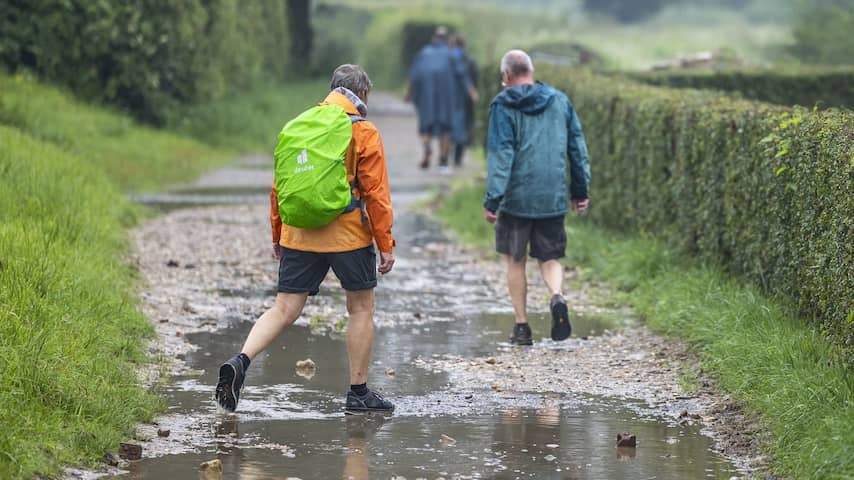
The changeable weather offers relief to the top layer of the soil. But to get rid of the drought, much more precipitation is needed. “The current precipitation deficit amounts to a whole month’s worth in July,” says Berend van Straaten of Weeronline.
On Sunday and Monday there were already heavy showers, which led to flooding in some places. The rest of the week will also remain changeable. Weeronline expects between 10 and 40 millimeters of rain between now and Sunday, although this may vary greatly regionally.
Yet the drought period is far from over. The rain offers relief to the top layer of the soil, which makes the dry grass a bit greener again in many places. But the rain does not make a big difference for the deeper soil layers.
Until a few days ago, 2025 even belonged to the 5 percent driest years, according to the KNMI drought monitor. “And even with the expected rain, 2025 will remain exceptionally dry,” says Van Straaten. “A lot of rain is still needed to change that.”
The current precipitation deficit is 180 millimeters, while the median around this time of year is 100 millimeters. “So we still need 80 millimeters of rain to reach a ‘normal’ precipitation deficit. That is equal to a whole month of rain in July.” For that, it would have to rain a lot and especially for a long time. If such an amount falls in a short time, the soil cannot absorb the water properly.
Although the past springs have often been dry, Van Straaten does not draw any major conclusions from this. “That is more due to chance than to a clear meteorological link. Last year, for example, there was a very wet spring. It was also not dry in 2021.” The fact that it was dry for a long time in other years is due to high-pressure areas that remain hanging over our region for a long time.